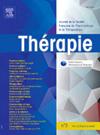Non-medical nitrous oxide misuse: From identifying a signal to unprecedented addictovigilance network communication
IF 1.8
4区 医学
Q3 PHARMACOLOGY & PHARMACY
引用次数: 0
Abstract
Addictovigilance is a French health monitoring system, composed of 13 centres distributed across the national territory, that aims to monitor cases of abuse, misuse, or use disorders related to psychoactive substances. Fulfilling these missions requires a regional network that ensures efficient information flow, dissemination to health authorities, and subsequent downward communication to prevent risks. This was illustrated through the example of nitrous oxide misuse. The Nantes Addictovigilance Centre, which is responsible for nitrous oxide monitoring, has highlighted the emergence of a signal from the very first cases. Since 2018, 6 national addictovigilance reports have subsequently been produced highlighting the increase in this signal in quantitative terms and in qualitative terms, with a diversification and worsening of complications (use disorders, neurological, psychiatric, cardiac and more recently thromboembolic). At the local and regional level, each addictovigilance centre has relayed information to its network, in a variety of ways, but also to the general public, particularly through the media. Studies have also been carried out to better quantify and qualify nitrous oxide consumption. These signals from addictovigilance data have been the subject of numerous national and international communications (health authorities, addictovigilance network, international scientific articles). They have also contributed to the promulgation of the French law of June 2021 aimed to prevent dangerous uses of nitrous oxide, and international reporting. The addictovigilance centres have made it possible to obtain an early, rapid and accurate signal with pharmacological and medical data. Nitrous oxide is an example of the wide potential of action of the French addictovigilance network, in all its fields of competence: training, specific collection, research and information.
非医疗氧化亚氮滥用:从识别信号到前所未有的成瘾警戒网络通信。
成瘾警戒是法国的一个健康监测系统,由分布在全国各地的13个中心组成,旨在监测与精神活性物质有关的滥用、误用或使用障碍的案件。完成这些任务需要一个区域网络,以确保有效的信息流动、向卫生当局传播以及随后的向下沟通,以防止风险。这是通过一氧化二氮滥用的例子来说明的。负责一氧化二氮监测的南特成瘾警戒中心强调,从第一批病例中就出现了一个信号。自2018年以来,先后编写了6份国家成瘾警惕性报告,强调了这一信号在数量和质量方面的增加,并发症(使用障碍、神经、精神、心脏和最近的血栓栓塞)的多样化和恶化。在地方和区域一级,每个成瘾警戒中心都以各种方式向其网络传递信息,但也向公众传递信息,特别是通过媒体。还进行了研究,以更好地量化和限定一氧化二氮的消耗。来自成瘾警惕性数据的这些信号已成为许多国家和国际交流(卫生当局、成瘾警惕性网络、国际科学文章)的主题。他们还为颁布2021年6月旨在防止危险使用一氧化二氮的法国法律以及国际报告作出了贡献。成瘾监测中心使利用药理学和医学数据获得早期、快速和准确的信号成为可能。一氧化二氮是法国成瘾警戒网络在其所有权限领域的广泛行动潜力的一个例子:培训,具体收集,研究和信息。
本文章由计算机程序翻译,如有差异,请以英文原文为准。
求助全文
约1分钟内获得全文
求助全文
来源期刊

Therapie
医学-药学
CiteScore
3.50
自引率
7.70%
发文量
132
审稿时长
57 days
期刊介绍:
Thérapie is a peer-reviewed journal devoted to Clinical Pharmacology, Therapeutics, Pharmacokinetics, Pharmacovigilance, Addictovigilance, Social Pharmacology, Pharmacoepidemiology, Pharmacoeconomics and Evidence-Based-Medicine. Thérapie publishes in French or in English original articles, general reviews, letters to the editor reporting original findings, correspondence relating to articles or letters published in the Journal, short articles, editorials on up-to-date topics, Pharmacovigilance or Addictovigilance reports that follow the French "guidelines" concerning good practice in pharmacovigilance publications. The journal also publishes thematic issues on topical subject.
The journal is indexed in the main international data bases and notably in: Biosis Previews/Biological Abstracts, Embase/Excerpta Medica, Medline/Index Medicus, Science Citation Index.
 求助内容:
求助内容: 应助结果提醒方式:
应助结果提醒方式:


